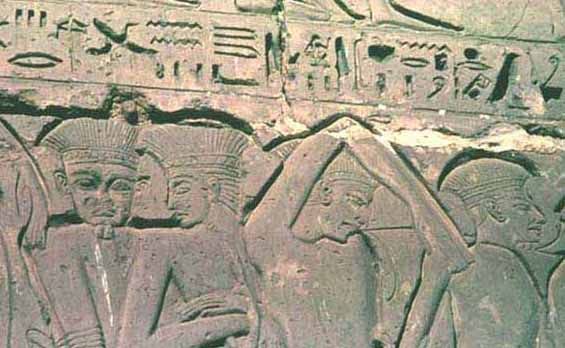The Philistines have puzzled historians and archaeologists regarding their genetic makeup and cultural background for years. However, increasing scientific research and studies are suggesting Israel’s Biblical foes, who lived in today’s territory of Israel during the Iron Age were linked culturally with the Greek world.
The enigmatic culture of the Philistines, which flourished during the Iron Age (approximately 1200-604 BC), deeply influenced southern cultural history, agriculture, and dietary customs. More than a quarter of a century of excavations at Tell es-Safi/Gath in central Israel, identified as the biblical Gath of the Philistines and the home of Goliath, have provided a unique window into the world of this ancient civilization.
A research team from Bar-Ilan University in Israel caused a stir in the archaeological community, when they posited the Philistines had a connection with the Greek world after finding seeds of different plants in temples in the city of Gath, likely located in an archaeological site in the Shephelah in south-central Israel, thereby discovering several details of Philistine life.
The team found there was a correlation between Mediterranean ritual plants at the site, which provides a clear connection between the Philistines and the Greek civilization of the Aegean.
It is now clear that plants examined such as the Lilac Chaste Tree, Crown Daisy, and Silver Scabiosa are linked to the cults of the goddesses Demeter, Artemis, and Asclepius.
The researchers conducted qualitative and quantitative analyses of the plants, studying the time of harvesting as well as the way they were offered at the altar, which allowed them to develop hypotheses about their symbolic significance.
The systematic excavation program of the temple area in the lower city of Gath, led by a team from Bar-Ilan University headed by Professor Aren Maeir (Ph.D. in archaeology) and Professor Ehud Weiss (Ph.D. in archaeobotany), has overseen the reconstruction of the plants used in Philistine rituals. Tel Zafit (Gath of Philistines) is a national park under the auspices of the Israel Nature and Parks Authority.
While many aspects of Philistine culture are well documented, the specifics of their religious practices and deities have long remained shrouded in mystery. The study by Frumin et al. on “Philistine Cultic Practices Relating to Plants at Biblical Gath,” recently published in Scientific Reports, offers valuable new insights into understanding the ritual practices of the Philistines.
The discovery of numerous plants in two temples unearthed at the site has revealed unprecedented knowledge about the worship practices and beliefs of the Philistines – their ingredients for temple food, the timing of ceremonies, and the plants used for temple decoration.
Dr. Suembikya Frumin, under the supervision of Professor Ehud Weiss, studied the use of Philistine plants in their temples as part of her doctoral work. Together with Dr. Amit Dagan, Maria Eniukhina, and Professor Aren Maeir, they investigated the plants found in the temple courtyards, uncovering a wealth of information about the significance of various plant species in Philistine religious ceremonies.
Through meticulous examination and quantitative and qualitative analysis of the types of plants used, their harvesting times, methods of offering, and possible symbolic meanings, the researchers have assembled a clearer picture of the Philistine approach to their religion.
These widely distributed Mediterranean plants connect the Philistines to religious rituals, mythology, and symbols associated with early Greek deities, such as Hera, Artemis, and Demeter.



